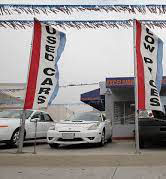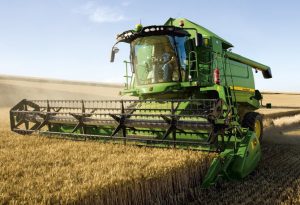
In our quest for some normalcy around the house, my wife and I are still trying to sort and reorganize stuff after the windstorm on May 21. As a consequence, our back porch (whose screened-in space we normally enjoy on summer evenings) has become a repository for salvage from the garage, tool shed and dishevelled yard. The other day, for example, I came across a bunch of short 2X4s with tool holders attached. They’d bounced loose when the garage was crushed. So, I began prying the holders from the wood.
“If I salvage the tool holders now, I won’t have to track them down when we restore the garage at some point,” I thought. “Who knows whether they’ll even be available down the road?”
As I detached the hooks and holders from the wood, I worried maybe I was showing signs of becoming a hoarder. In truth, I could probably buy replacement hooks later, but again what if I eventually go to a hardware store and they just don’t have them in stock when I want them? I began thinking about the implications of my reaction.
It’s pretty clear that a combination of the pandemic and the storm (not to mention the regular ebb and flow of supply and demand in inflationary times) has further damaged what business experts refer to as “the supply chain.”

I guess the first indications of trouble go all the way back to March 2020 – at the start of the pandemic – when North Americans raced to buy bottled water and toilet tissue. A lot of us wondered what that meant. Then, I read what economists had to say about such a response. Panic buying, they said, is fairly normal in times of crisis.
But in the case of the COVID pandemic, in fact, people did notspend the way they normally did. Consumers suddenly had savings they hadn’t spent, and businesses had inventory they hadn’t sold, which wholesalers and retailers promptly dumped. Then, when authorities began to reopen the marketplace, there was all this buying power and no stock. And that drove up appetite and prices.

Thus, for example, car sales – if a buyer can actually find one either used or new – have risen to their highest level in 15 years. High demand and limited supply have created shortages and widespread supply-chain disruptions. In the U.S., for example, in February 2020 retailers had about 43 days of inventory on hand; two years into the pandemic they have just 33 days.
Meanwhile, new-home sales are at their highest level in 14 years. As a result, contractors are reporting incredible shortages of vital building materials – drywall, roofing and framing lumber.
It’s just a microcosm of the problem, but like many amateur gardeners in town, before the tornado I’d purchased some lumber – a handful of 2X6s and 4X4s – to build raised beds in our backyard; they cost nearly $200. Apparently, in the housebuilding game, higher-priced materials have contractors delaying new construction, which reduces the supply, which increases the price. Presto. Inflation is now at a 31-year high of 6.8 per cent.
And in turn, the Bank of Canada has raised interest rates to 1.5 per cent, and may again. Rising interest rates are supposed to encourage saving and curb borrowing. But if rates rise again, Manulife Bank of Canada says, as many as one in four homeowners would have to sell their home. Mortgage payments would be that prohibitive.
“Some Canadians made decisions to take their mortgages out based on what they could be approved for,” Manulife said. “They didn’t get the advice to say, ‘I know I can get approved for a mortgage at this level, but can I actually afford it?’”
Did I fail to mention the alleged reduced supply and rising price of fuel? Whether Russian President Vladimir Putin is to blame for this delivery-system mess or not, his war in Ukraine at least psychologically has disrupted the supply certainly for European countries, and North American oil corporations have taken full advantage of the fear-mongering.

If the thought of filling up your car or pickup for $100 or $200 keeps you awake at night, imagine the sleepless nights farmers with large implements endure. A friend from southwestern Saskatchewan told me this week that on average his farm neighbours consume about 900 litres of diesel fuel per farm implement per day. That’s about $1,800 per fill-up every day.
Talk about a dysfunctional supply chain for toilet paper and 2X6s. But wait a minute. If the practice of bartering returns, maybe I can exchange my vast collection of garage tool hooks for a full tank of gas.